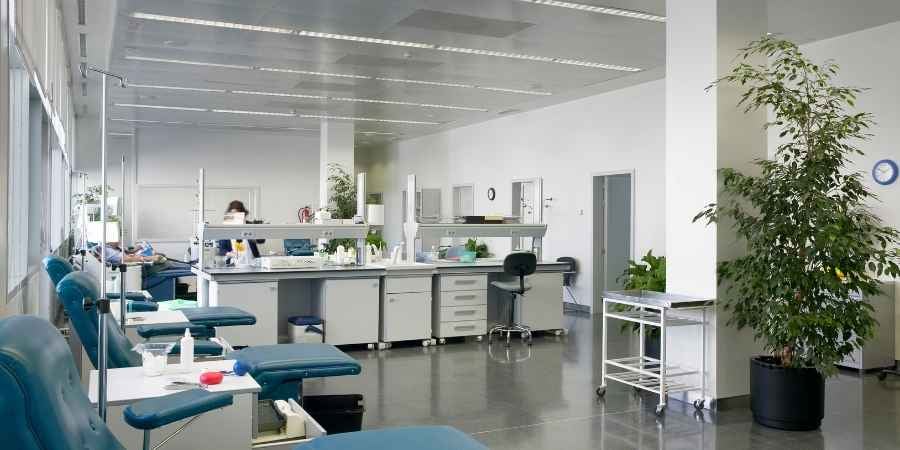
In high-risk environments, it is essential to maintain the indoor air quality in order to protect workers from exposure to hazardous materials. There are three basic strategies to improve indoor air quality, and it is important to carefully monitor and control these factors to ensure a safe work environment. This blog will provide an overview of the key considerations for indoor air quality in high-risk environments.
3 Solutions to Maintain Your Air
Source Control
Polluted air can lead to a variety of health problems. There are many things you can do to improve the air quality in your facility, but one of the most important is controlling the sources of pollution. There are many potential sources of indoor pollution, including emissions from appliances, cleaning products, building materials, and furniture. Other common sources include aerosols, off-gassing from indoor equipment, and outdoor air infiltration.
Source control is a way to maintain indoor air quality by controlling the sources of pollution. You can help reduce these emissions by choosing energy-efficient appliances and using green cleaning products. When it comes to reducing your carbon footprint, every little bit counts.
Energy-efficient appliances use less electricity, which means they produce fewer greenhouse gas emissions. And green cleaning products are made from natural ingredients that are better for the environment. So when you make the switch to energy-efficient appliances and green cleaning products, you're doing your part to help reduce emissions and protect the planet.
By taking these steps to control the sources of pollution in your facility, you can significantly improve the air quality and create a healthier environment for yourself and those around you.
Improved Ventilation
When it comes to indoor air quality, ventilation is key. By ensuring that your facility is well-ventilated, you can help to flush out any pollutants that have built up indoors. This is especially important in facilities where there are a lot of people coming and going, as the risk of indoor air pollution is higher in these environments.
There are a few things to keep in mind when ventilating your facility. First, make sure that you are using an adequate amount of fresh air. Second, ensure that the air is being evenly distributed throughout the space. And finally, be sure to monitor the air quality regularly so that you can identify any potential problems early on.
Air Cleaners
Good indoor air quality is important for maintaining a healthy and productive workforce. Air cleaners can play a role in improving indoor air quality by removing contaminants from the air. There are a variety of air cleaners on the market, and choosing the right one for your facility will depend on your specific needs. Air cleaners can be used to remove particulates, gasses, and odors from the air. Some air cleaners also have features that make them effective at reducing allergens and other airborne contaminants.
Filtration Air Cleaners
By using filtration air cleaners, you can maintain indoor air quality and keep everyone in the facility healthy. Filtration air cleaners work by passing airflow through a filter which removes contaminants from the air. This helps to improve indoor air quality by removing particles such as dust, pollen, and bacteria from the air.
There are many different types of filtration air cleaners available on the market, so it is important to choose one that is right for your facility. Some factors to consider include the size of the unit, the type of filter, and the specific needs of your facility.
By using a filtration air cleaner in your facility, you can help to improve indoor air quality and create a healthier environment for everyone in the building.
HEPA Filtration Air Cleaners
Consider using HEPA filtration air cleaners. There are a few different types of air filtration systems available on the market, but HEPA (high-efficiency particulate air) filtering is considered to be one of the most effective.
HEPA filters are able to capture 99.97% of particles that are 0.3 microns or larger in size, making them an extremely effective way to remove contaminants from the air. This includes pollen, dust, mold spores, and pet dander - all of which can trigger allergies or respiratory problems. In addition to improving air quality, HEPA filters can also help to reduce noise levels and save energy by reducing the need for heating and cooling systems to work as hard. In addition, HEPA filtration air cleaners can help to reduce odors and VOCs (volatile organic compounds).
Conclusion
If you want to learn more about indoor air quality in high-risk environments, download the Ultimate Guide to Indoor Air Quality in High-Risk Environments. This guide will teach you about the dangers of poor indoor air quality and how to improve it in your facility. You'll learn about the different types of pollutants that can cause health problems, and how to remove them from your indoor environment. With this guide, you can ensure that your employees are breathing safe, clean air.
